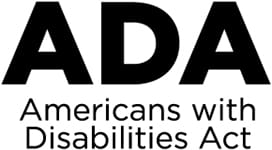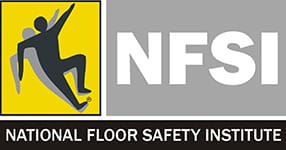Some Things Are DIY Friendly. Your Commercial Floor Mats Aren’t
Backing, Bevels, Pile, and Placement: Why They Matter (More Than You Think!) for Commercial Floor Mat Safety
Why Choosing the Right Commercial Floor Mat Matters
Many business owners wonder how to choose the right commercial floor mat for their business, but the truth is it’s not as simple as picking one off the shelf. The wrong mat isn’t just “a little less effective” than the right one. The wrong floor mat can actually create hazards, hurting people, your reputation, time, money, and cause a whole lot of headaches.
The numbers speak for themselves:
- Over 8 million people are treated in emergency rooms each year from falls.
- The average slip-and-fall claim costs $51,047.
- Nearly half of slip-and-fall accidents could be prevented with the right traction.
When it comes down to it, commercial floor mats are way more than a decor decision — they’re actually an important part of your safety system.
DIY Floor Mats: A Costly and Unsafe Mistake
You might be tempted to scour the internet for DIY floor mats or cheap commercial mats to save money, but cutting corners often backfires, and this is no exception. Most DIY solutions don’t meet ADA requirements or basic safety standards — creating bigger problems than they solve.
Some of the worst offenders?
- Carpet remnants – Without proper backing or bound edges, they fray, shift, and slip.
- Mats without bevels – Straight edges can catch shoes and create trip hazards.
- Rippled vinyl-backed mats – These curl, bunch, and are rarely available in the right size or pile height for your space.
- Scatter rugs – Cheap and easy to find, but they slide underfoot and don’t stay put.
You might notice a pattern; Every one of these fails because of poor, missing, or incorrect backing, beveling, pile, or placement. That’s why DIY mats aren’t protective — they’re liabilities.
What ADA Compliance Means for Floor Mats
Most business owners think “a mat is a mat.” It’s tempting to think that way, but we’re here to tell you that the details matter. ADA standards don’t just look at the mat itself — they look at how it performs in context. The right mat in the wrong place can be just as dangerous as having no mat at all.
- Backing must hold the mat securely on different surfaces, and there are different backings built for different surfaces like tile, carpet, or concrete. A mat that slips is an accident waiting to happen.
- Bevels must taper smoothly into the floor. Any edge higher than ½ inch risks catching shoes and violating ADA accessibility.
- Pile height and density must match the use case. Too plush in an office and it blocks wheelchairs or carts; too thin in a warehouse and it won’t provide fatigue relief.
- Placement is the biggest factor. Entryways, kitchens, warehouses, and offices all demand different specifications to stay safe and compliant.
This is exactly where DIY fails: most people buy a mat based on looks or price, not realizing that compliance depends on backing, bevel, pile, and placement working together.
The Importance of Proper Floor Mat Placement
Entryways
- The DIY Risk: Throw rugs and carpet scraps curl, can’t hold and maintain moisture, and slide in wet weather.
- Packerland’s Play: Heavy-duty scraper mats with slip-resistant backing, beveled edges, and the right pile to scrape off dirt, salt, and snow before it gets inside.
Production Floors & Warehouses
- The DIY Risk: Cheap vinyl runners that ripple under heavy traffic and don’t reduce fatigue.
- Packerland’s Play: Anti-fatigue mats with the proper pile density, beveled edges, and oil-resistant backing to stay stable in industrial zones.
Commercial Kitchens
- The DIY Risk: Scatter rugs or general-purpose mats trap grease and water, making floors slick.
- Packerland’s Play: NSFI-certified kitchen mats with slip-resistant backing, drainage channels, and low-profile bevels to keep staff safe in fast-paced, wet environments.
Offices & Customer Areas
- The DIY Risk: Decorative rugs curl, wear thin, and often exceed ADA’s ½-inch edge rule.
- Packerland’s Play: ADA-compliant mats with low-profile bevels, durable pile height, and backing matched to the floor type. These protect both accessibility and brand image, especially if you get them personalized with your logo.
The Safer, Smarter Choice: Professional Commercial Floor Mats
Professional-grade mats are designed for performance and peace of mind. Every mat we install is:
- OSHA Compliant – Meets workplace safety standards.
- NSFI Certified – Proven slip-resistant.
- ADA Compliant – Safe and accessible for all.
- American Made – Built with quality that lasts.
And because floor mats are our specialty, we have the know-how to match the right mat to the right placement while ensuring the backing, bevel, and pile are right every time. We’ve been doing it for thousands of Wisconsin businesses since 1969, and we’d love to do it for your business, too.
Don’t Let a DIY Mat Become a DIY Lawsuit
When it comes to protecting employees, customers, and your reputation, floor mats are not a DIY project. Trust the pros to help you choose, install, and maintain mats that work as hard as you do.







